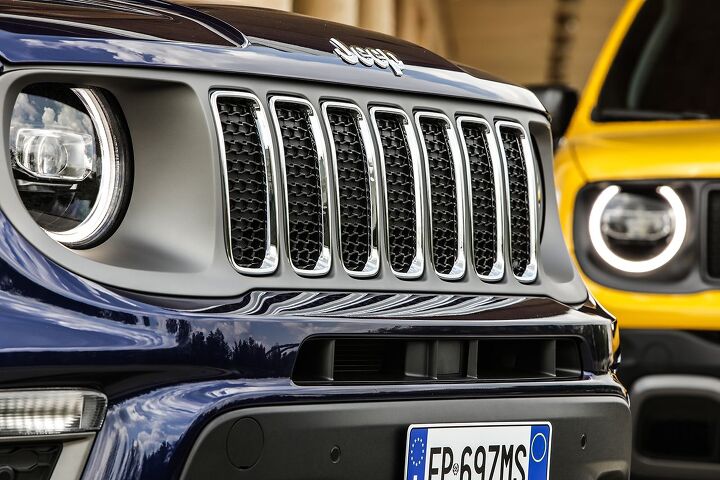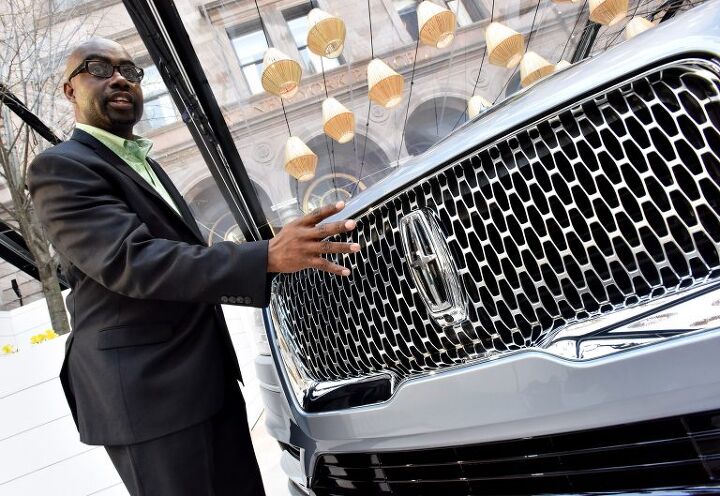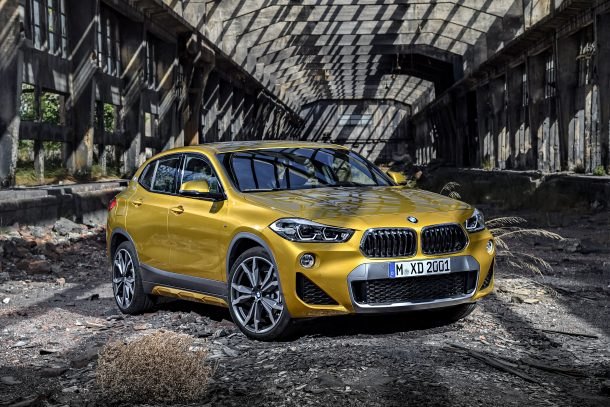#strategy
Tesla Announced Layoffs to Public Before Telling Employees: Report
On Thursday, Tesla announced it will finally begin delivering the Model 3’s long-awaited base trim to the public through direct online sales. By eliminating storefronts, the automaker believes it can reduce costs — helping to get that pesky profit situation under control.
Unfortunately, reports have emerged that claim those employees had no idea their jobs were on the line. Meanwhile, the company’s share price took a hit in the wake of the announcement, causing its stock to drop significantly. Since last Thursday, more than $8 billion disappeared from Tesla’s market capitalization.
Fiat Chrysler Substituting Fiat Production, Adding More Jeeps in Italy
During Fiat Chrysler CEO Sergio Marchionne’s final days, he said his company would begin prioritizing Jeep production in Europe. This of course comes at the expense of the Fiat brand, which lost a sizable hunk of the European market after 2009 and appears to be outright failing in the United States.
While the brand gained back some of that lost ground east of the Atlantic over the past two years, Fiat’s Jeep stablemate took off like a rocket after 2013 — effectively tripling its share of the European market. Eager to cater to the ever-changing tastes of consumers, FCA is going to stick with Jeep and make some money. As a byproduct, the company thinks it may be able to revitalize Italy’s manufacturing industry, bolster overall volume, and get some laid-off employees back onto the factory floor.
However, it’s not just Jeep that’s getting special treatment. FCA intends to do the same for Alfa Romeo and Maserati, as their products boast higher margins than anything Fiat builds.
It's Happening Again: Ford Europe Wants to Shift Attention/Money Away From Cars
In an earlier analysis of Ford’s lackluster share price, we noted that Europe and China posed a significant problem for the automaker’s bottom line. Europe, which was previously pretty good to the brand, has gradually lost its share of the market since 1994. While Ford still moves a lot of metal in the region, something’s definitely wrong.
On Wednesday, Ford announced that its European operations had endured a $73 million second-quarter loss. It’s anticipating a full-year loss in the region after earning $234 million last year. “We’re extremely dissatisfied with our performance in Europe,” said CEO Jim Hackett.
Something has to be done to avoid further setbacks. According to Jim Farley, Ford’s head of global markets, the clear remedy is concentrating on vans and crossovers because that’s where the money is. It’s a similar strategy to what’s being done in the United States, where Ford eventually aims to cull the lineup to a point where the Mustang is the only vehicle that qualifies as a traditional car. But is it the correct one, considering how we’ve arrived at this point?
Freeing Up Factories: Toyota to Consolidate Electronics Operations Within Denso
Toyota Motor Corp. says it had reached an agreement to consolidate all of its core electronics component operations within Denso. The move should allow Toyota to free up resources to compete more effectively in the new vehicle technology field.
Japan’s largest automaker noted it still has to discuss the logistics of transferring production of parts produced at its Hirose plant, near Toyota’s global headquarters, before the end of next year. But Denso, the company’s largest supplier, has already agreed to the core concept of the deal. By 2022, Denso will have taken over the mass production of all electronics components used in Toyota’s vehicles.
Is Mitsubishi Finally Poised for a Comeback?
While Mitsubishi Motors isn’t in the same dire straits it once was, the brand has only recently stopped hemorrhaging sales after doing so for over a decade. After losing half of its annual volume between 2002 and 2004, Mitsubishi trudged further into delivery darkness during the recession — finally dragging itself back into the light after SUV sales improved. Unfortunately, its image has not been so quick to recover and volume has a long way to go before anyone at the company will be celebrating.
However, the brand has a lot of closeted fans over the age of 30 in the United States. There was a time when Mitsubishi offered affordable transportation that you could happily live with and a handful of fun models for those interested in hooliganism. People who remember driving those vehicles don’t see Mitsubishi as a lost cause, but as a formerly important automaker that has seriously lost its way.
Fortunately, the brand now has the means to find itself. With help from the Renault-Nissan Alliance and its own parent company, Mitsubishi Motors may even be poised for a comeback. Last year the company sold 103,686 vehicles inside the United States, a feat which hadn’t been replicated since 2007 when the brand was still losing sales like they were socks in a dryer.
Chasing the Dragon: Lincoln's Plan to Capture the Chinese Market
While both Buick and Cadillac have a healthy lead over Lincoln in terms of domestic deliveries, the space between them is far more pronounced in China. At home, Ford moved 111,159 examples of its premium marque in 2017 against Cadillac’s 156,440. However, China’s Caddy sales clocked in at 175,489 last year — a number Lincoln could only muse about in its wildest fantasies.
That’s because Ford exports all of its luxury vehicles to China, while GM tends to build them locally. But the Lincoln brand shows a lot of promise in Asia. Ford moved roughly 80,000 vehicles in the People’s Republic in 2017 and 54,124 of those models wore the Lincoln cross. In theory, if Ford could localize and bolster its product lineup within the country, a higher volume would be all but assured. It’s a theory the automaker intends to test, too.
Lincoln Trimming Fleet Fat to Shore Up Residual Values
Lincoln is a brand that never fully recovered from the post-recession sales slump. While volume has improved over the last several years, 2017 actually saw a very slight decrease in overall deliveries. That’s a shame, as we’ve seen Lincoln making efforts to turn things around.
Sure, the domestic luxury brand could still stand to distance itself from mainstream Fords a bit more. But Lincoln has stopped attempting to sell Buick-grade luxury at Cadillac prices and seems intent on pursuing more elegant designs. Still, Ford Motor Co. CEO Jim Hackett wants the company’s operational fitness in top form as soon as possible, and getting Lincoln’s overall value up is an important part of that goal.
One way of doing this is by leaning on utility vehicles. Navigator sales have improved dramatically since the fourth-generation model hit dealers and the Aviator seems to hold real promise. But it’s not scheduled for sale until the 2020 model year, which means Lincoln has to do more than just wait around until new and updated SUVs can right the ship.
Mini Dealers Want to Know What the Hell Is Going on With the Brand
Sales of the Mini brand have been in a downward spiral since 2013 and U.S. dealerships want to know what expect in the future. Any prospects for the nameplate to grow into a volume brand appears to have been thrown out the window by BMW Group, and it’s now looking like it could shift into electrification.
Dealers, however, don’t know this for sure, and hope to gain clarity on the matter as the domestic market dives deeper into its appreciation for trucks, SUVs, and crossovers.
“I don’t think the dealers have a very clear vision of where the car line is going long term,” explained Jason Willis, member of the Mini National Dealer Council. “There is a lot of pride on being a small-car performance company, so my guess is we will continue to be a small-car company. But as far as electric and how we fit in, we’re still waiting to hear that plan.”
Tesla's New Strategy Includes 'Not Paying' Elon Musk and an Astronomical Share Price
Tesla Motors has announced that its CEO, Elon Musk, won’t be paid unless its already high stock valuation blasts into the stratosphere. The executive’s compensation is now tied to a dozen operational milestones. The first of these requires bringing the company’s current market cap to $100 billion, followed by 11 more set at $50 billion increments.
Agreeing to the program, Musk now has to stay with Tesla until 2028 as both its executive chair and product officer. While this does allow him to bring in another CEO sometime in the future, the company is likely hoping to dispel any speculation that he would abandon the position. It’s good to see Musk putting some serious skin into the game but, as a multi-billionaire, his not being paid unless Tesla’s stock valuation climbs isn’t the biggest threat to his financial security.
Will Light Trucks Turn Around BMW's Sliding Sales?
Bavarian Motor Works has found itself in a situation familiar to most brands without a “full complement” of sport utility vehicles — slipping sales. BMW’s U.S. sales dipped 2.4 percent in 2017, and that was after a 9.5 percent drop in 2016. It cites an inability to supply the region with enough light trucks to meet demand as the primary reason for the sales slump and promises things will change for 2018.
The brand plans to launch the redesigned X4 compact crossover this year and hints that it might update the X5 too. Sales of the X2, which was present at the North American International Auto Show last week, should commence this March. On the other end of the size spectrum is BMW’s all-new X7 — which will become the automaker’s biggest model when it goes into production later this year.
Ghosn Expects Renault-Nissan to Become World's Largest Automaker This Summer
Since acquiring Mitsubishi in 2016, the Renault-Nissan Alliance has found itself in the midst of Volkswagen and Toyota’s struggle for the title of World’s Largest Automaker.
At the end of 2016, VW was still on top but momentarily ceded ground as Toyota amped up volume in early 2017. Compared to last year, the Germans saw sales fall a half-percent in the first quarter of 2017 as the Japanese companies recorded more stable growth. But CEO extraordinaire Carlos Ghosn believes Renault-Nissan has what it takes to fill the top spot before the end of the summer.
While it would be a privilege to tell you that Ghosn entered a darkened room illuminated by a single spotlight to announce the time for the Alliance to crush its enemies was now, the reality was far more tame. The shareholders meeting was adequately lit and Carlos stated, without malice, that becoming the world’s largest automotive superpower is more of an inevitable accident than an intentional conquest.
Toyota Vows to Stop Being Such a Dinosaur, Muses Partnerships as a Shortcut
Despite being Japan’s biggest automaker, Toyota has lagged behind many of its rivals in terms of cutting-edge technology. Most major car manufacturers have already begun developing self-driving vehicles, with some going so far as to make strategic partnerships with companies specializing in the applicable technologies. By contrast, Toyota has a strong R&D program but never saw fit to pursue autonomous development or battery-electric vehicles quite so aggressively as General Motors or Renault-Nissan, for example.
Toyota President Akio Toyoda has now admitted that may have been a mistake. At the company’s annual shareholders meeting on Wednesday, he promised the automaker would become more committed to achieving technical developments. Toyoda didn’t bring forward a concrete strategy but conceded the spending of additional capital would likely play a role — and an alliance or two isn’t out of the question.
In With the Good Sales, Out With the Bad: GM Plans to Further Shrink Fleet Sales
General Motors has decided to further shrink its outgoing fleet of rental vehicles to prioritize its in-house vehicle lending service, Maven, and focus on getting newer cars to customers. That does mean building fewer vehicles overall, but GM shouldn’t care if it can keep raking in the profits — something rental fleets aren’t particularly good at in lower volumes, unless you’re the one charging a daily rate.
Alan Batey, president of GM’s North American operations, claims sales to rental fleets should drop by about 50,000 units this year and an undisclosed amount in 2018. It follows the company’s trend to scale back fleet sales in general. Big businesses accounted for 16.1 percent of its total U.S. sales in 2014, but that was reduced to 11.7 percent in 2016.
Volkswagen Needs a New Lineup to Reach Its Goals
It’s time to talk about Volkswagen. You know Volkswagen: they make the Jetta, which is possibly today’s most adept compact sedan at churning out lifelong Toyota customers.
Blind Spot: Catching Up With Chrysler
With the government still waiting to see how much it will get out of its equity in General Motors, The General seems to be attracting more of the media commentary than Chrysler these days. And not without good reason: GM saw the greatest drop in market share last month of any Detroit automaker, its government-hyped Volt is flopping, Opel continues to be an open sore and it can’t help but flaunt its cluelessness about youth marketing. But interest in GM’s shortcomings seems to be driven by little more than election-year political implications, which Chrysler was able to avoid by borrowing cash and misleadingly claiming to have squared up with the American taxpayer. After all, Chrysler is facing just as many challenges as GM, if not more. And despite having formally closed the bailout chapter of its history, Chrysler’s performance still bears on the decision to rescue America’s weakest major automaker.





























Recent Comments